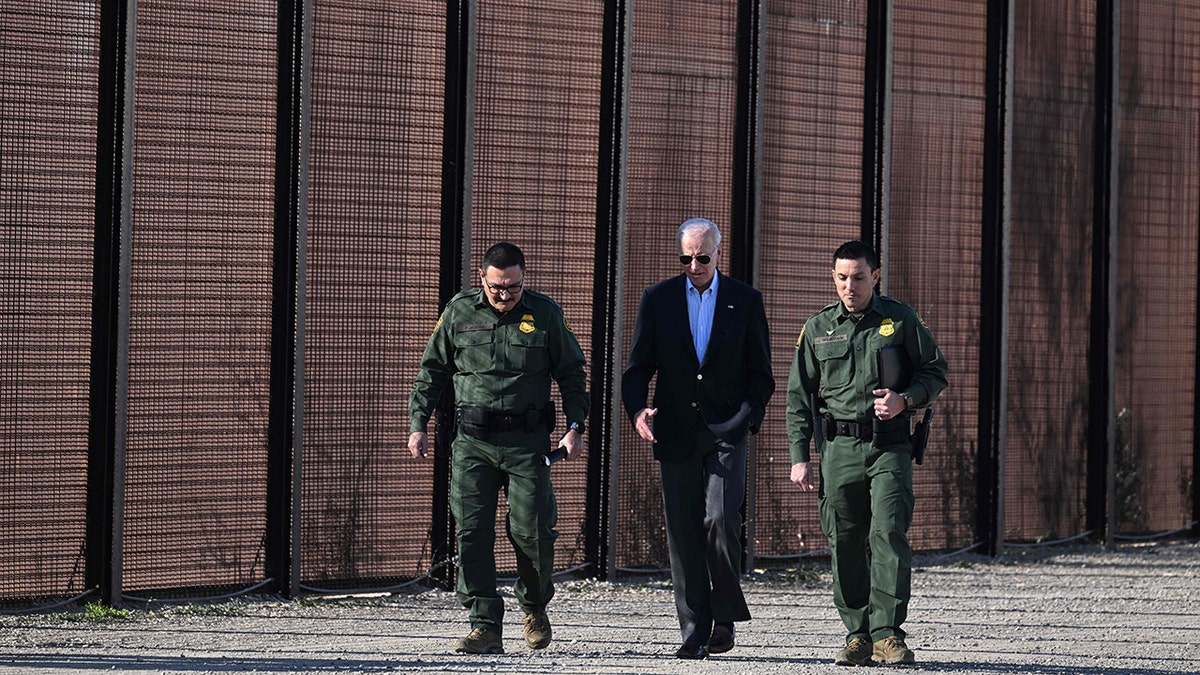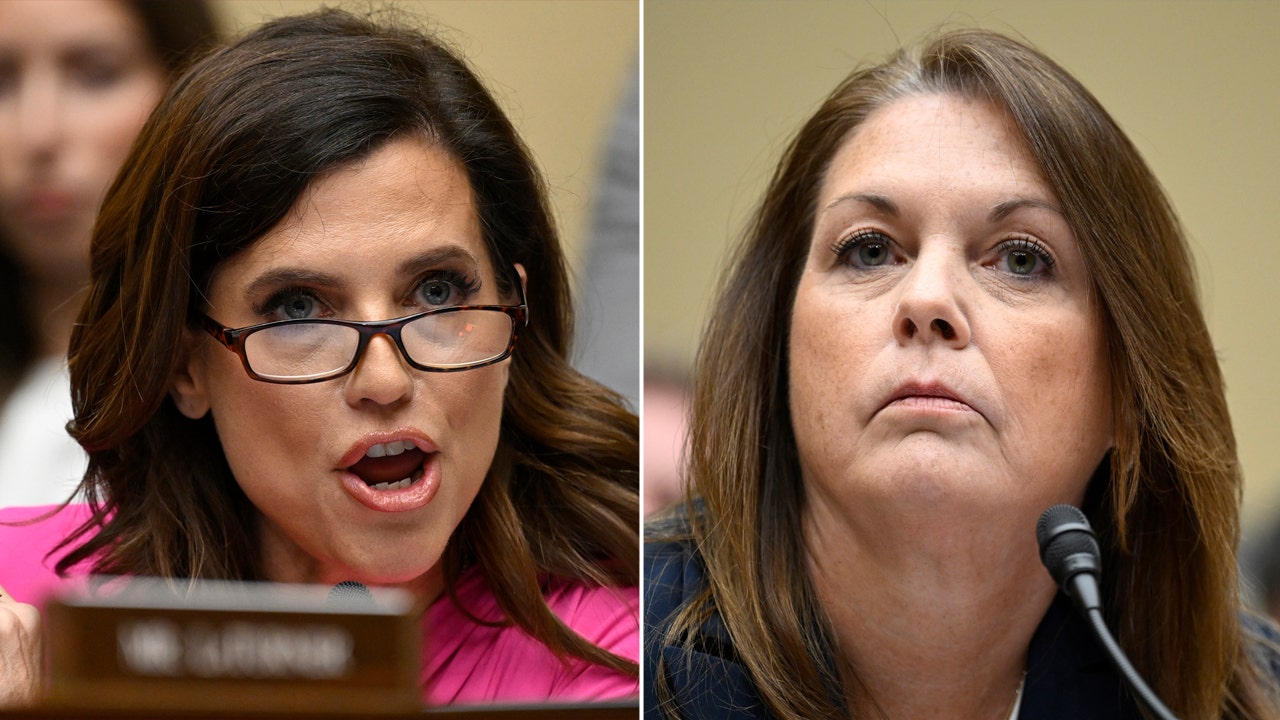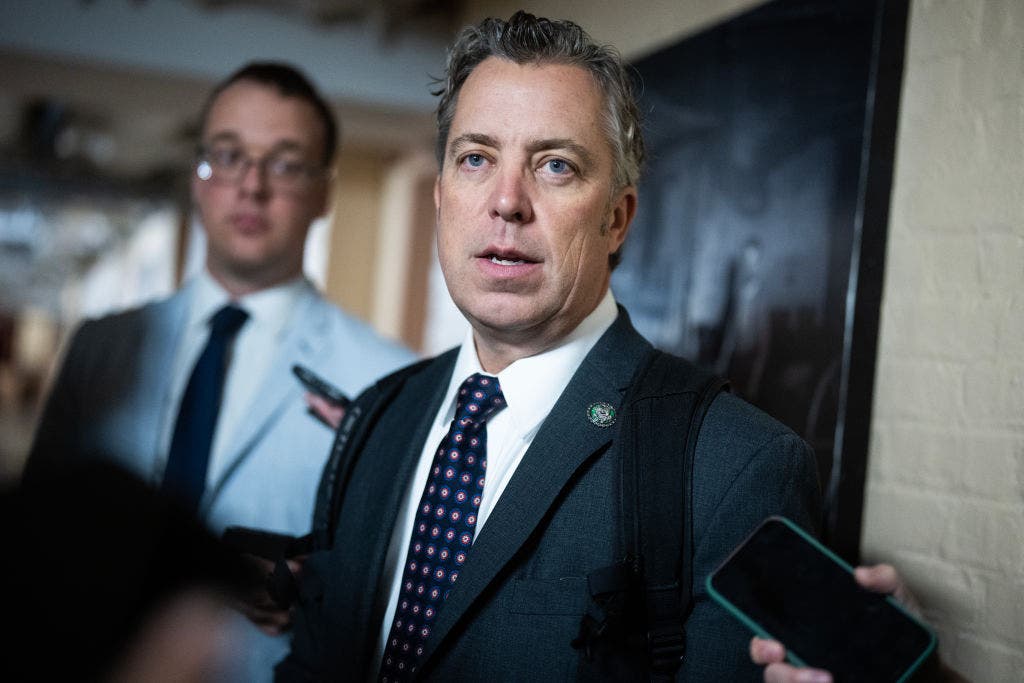West
Victim of brutal 2008 illegal migrant attack speaks out about Harris’ record as prosecutor
A California woman who in 2008 fell victim to a violent attack at the hands of an undocumented immigrant is speaking out against Vice President Kamala Harris, who as San Francisco District Attorney, launched a program that set the victim’s attacker free.
Amanda Kiefer was walking with a group of friends in San Francisco when 20-year-old Alexander Izaguirre stole her purse and then attempted to run her down in a waiting SUV, fracturing the woman’s skull.
Izaguirre, who was in the country illegally, had been arrested a few months prior to the attack on drug charges but was able to roam free thanks to a program launched by Harris, then the city’s district attorney, that allowed non-violent offenders to avoid jail and instead enter job training and eventually have their records expunged.
Kiefer, who was 29 at the time of the attack, is now speaking out about the trauma for the first time in 15 years, telling ABC News that the incident was a “wake up” call for her.
HARRIS FAILED TO COMBAT ‘ROOT CAUSES’ OF ILLEGAL IMMIGRATION, FORMER BORDER PATROL UNION CHIEF SAYS
“When a policy negatively affects you, you wake up,” Keifer, now 45, told the outlet.
The brutal attack has re-entered the spotlight after the Republican National Committee released a two-minute campaign advertisement targeting Harris, arguing that the now-vice president and Democratic nominee for president was “liberal on illegal immigration before she ever reached the White House.”
The ad highlighted the case of Kiefer, saying that Harris “allowed illegal immigrant drug dealers to enter job training” instead of being jailed.
“If people who committed crimes were allowed to stay out of prison to train for jobs they couldn’t legally hold, I think most Americans would disapprove of that,” Kiefer said of the program.
The ABC News report highlighted that Harris has in the past acknowledged that the program, which was called “Back on Track” and was touted as being “smart on crime,” was not perfect, telling the Los Angeles Times in 2009 that there was a “flaw in the design” of the program that allowed illegal immigrants to remain free, even though they would be unlikely to take advantage of the job training.

Vice President Kamala Harris speaks during a campaign event at Westover High School in Fayetteville, North Carolina, on July 18, 2024. (ALLISON JOYCE/AFP via Getty Images)
THE MEDIA’S SUDDEN REJECTION OF KAMALA HARRIS’ ‘BORDER CZAR’ LABEL
“The whole point of the program [was] … to obtain and hold down lawful employment” — and that someone in the country illegally “probably would not be able to do that, so it would go against the very spirit of the program,” Harris said at the time.
“I believe we fixed it,” Harris added. “So moving forward, it is about making sure that no one enters Back on Track if they cannot hold legal employment.”
The RNC ad and Kiefer speaking out on the issue comes as the Trump campaign seeks to highlight Harris’ record on the border, an issue that has been politically challenging for an administration that saw illegal crossings reach all-time highs before recent asylum restrictions helped those numbers dip to a three-year low in June.
Harris was given a prominent role in helping address the crisis in the early days of the administration, being tasked by President Biden to lead an effort to address the “root causes” of illegal migration, most notably through diplomatic outreach to the Northern Triangle countries of El Salvador, Guatemala and Honduras.

President Biden speaks with a member of the U.S. Border Patrol as they walk along the U.S.-Mexico border fence in El Paso, Texas, on Jan. 8, 2023. (JIM WATSON/AFP via Getty Images)
However, critics say the vice president’s work on the issue was a failure, arguing that Harris did not do enough to prevent what would become a growing crisis.
“It’s very disappointing,” Brandon Judd, who recently retired as president of the Border Patrol Union, told Fox News Digital of Harris’ border record last week. “We gave her the policies that she needed to implement. She refused to implement those.”
Kiefer, meanwhile, told ABC News that the experience was a “red pill moment” for her, leading her to abandon what she said were her liberal political views from the time and embrace candidates such as former President Trump.
The Harris campaign did not immediately respond to a Fox News Digital request for comment.
Read the full article from Here

San Francisco, CA
Runners infuriated after SF Marathon miscalculates course length

SAN FRANCISCO (KGO) — For thousands of Bay Area runners, this year’s San Francisco Marathon has been a massive disappointment.
On Tuesday, participants received an email stating that a mistake had caused organizers to miscalculate one of the half marathon courses.
Instead of being 13.1 miles, the course through the city was actually only 12.6 miles.
Radhika Bhalla was one of the marathon’s participants. She says she figured out something was off while she was running and looking the mile markers.
“It was confusing in the beginning. There’s a little bit of like, maybe over time someone made a mistake, the next mile will be longer, we’ll make up for it,” Bhalla said.
Bhalla says while she just took up running this year, she’s come to love the sport. She tells me Sunday’s mix-up makes her feel like she’s been cheated.
“I got cheated from that experience because I did spend a couple of miles just mentally being like, what’s going on, who do I listen to, what pace do I have to follow, do I look at my watch?” said Bhalla.
Similar feelings were shared by Jack Leng. Leng says the weekend’s experience has left him with an especially bad impression – not least of all because he says this isn’t the first San Francisco Marathon he’s done that’s had problems.
“To have two bad experiences, I’m like, damn what new mess up are they going to come up with when I do it for a third time?” Leng said.
ABC7 News reached out to marathon officials to get their response on what went wrong.
In a statement, they said, in part:
“We know how disappointed the second-half marathon runners are, and we are as well. Unfortunately, the course route was measured correctly, but the certification map was drawn incorrectly. Mile markers are added based on the map, thus causing the distance calculation error.”
Organizers have updated the race times for participants since discovering the mistake.
But for many runners, they think more needs to be done and they’re asking for some form of compensation.
“Some people flew in from across the country. This is one of the most expensive races out there, it’s like $230 to just register for it. So I think the consternation is definitely justified,” said Leng.
In total, around 3,700 people participated in the miscalculated half-marathon.
Copyright © 2024 KGO-TV. All Rights Reserved.
Denver, CO
14-year-old charged with Denver murder was repeatedly released from custody in prior case, wanted for arrest at time of shooting

The 14-year-old boy charged with killing a Denver bar bouncer last month was repeatedly released from custody in a preceding juvenile case over the objection of prosecutors who thought he posed a danger to the community, according to court records obtained by The Denver Post.
The teenager was also wanted on a warrant at the time of the killing that would have kept him temporarily jailed without bond had he been arrested, records show.
The teen, whom The Post is not naming because he is a juvenile, is charged with first-degree murder in the killing of 49-year-old William “Todd” Kidd on July 10 outside the Federales Denver bar at 29th and Larimer streets in Denver’s River North Arts District.
Kidd, who worked at the bar, was intervening in a disturbance when he was shot, police have said. He died two days later on July 12.
The teenager’s journey through Colorado’s juvenile courts highlights how the system is designed to keep children out of custody through a focus on pretrial release and a statutory cap on the number of kids who can be incarcerated in the state — an approach supporters hail as the best way to help vulnerable youths, but critics decry as soft on crime.
“The vast majority of kids going through the system are not safety risks to anybody,” said Emma Mclean-Riggs, senior staff attorney at the American Civil Liberties Union of Colorado. “Sometimes these cases are used as leverage to produce more incarceration of children when there is not sufficient context.”
George Brauchler, a former district attorney and current Republican candidate for district attorney in the 23rd Judicial District, said while he understands the juvenile justice system’s aim to keep kids out of detention, the approach can be detrimental to both youths and broader community safety.
“We have gone so far off the deep end of the criminal justice reform spectrum that we are rolling the dice for a lot of communities because it makes us feel good about how we are treating kids,” he said.
Charged with stealing cars
The 14-year-old boy was arrested on charges of stealing cars in Douglas County in December and again in Adams County in January, court records show.
In Douglas County, he was charged in juvenile court with motor vehicle theft, conspiracy to commit motor vehicle theft, criminal mischief and false reporting, said Eric Ross, a spokesman for the 18th Judicial District Attorney’s Office. He declined to comment further.
In Adams County, the 14-year-old was charged in juvenile court with motor vehicle theft, resisting arrest, vehicular eluding and obstructing a police officer. Chris Hopper, spokesman for the 17th Judicial District Attorney’s Office, declined to comment on the case.
In the Adams County case, the boy on multiple occasions violated the conditions of his personal recognizance bond, records obtained by The Post show. He sometimes missed required meetings, violated his GPS monitoring and struggled to keep his GPS unit charged.
Personal recognizance bonds allow defendants to be released from custody on the promise they will return to court, rather than requiring defendants to pay money as collateral before their release. In 2021, state lawmakers required that all bonds set in juvenile cases be personal recognizance bonds.
“There was kind of a universal understanding that holding kids because their families are poor doesn’t make any sense,” Mclean-Riggs said of the 2021 change.
In late April, Adams County prosecutors filed a motion to revoke the boy’s bond after a fifth bond violation report was filed in the case, the records show.
The teen was arrested, and during a court hearing on May 1, his attorneys asked that he be released on bond into his mother’s custody. Prosecutors objected, citing “community safety concerns” because of his GPS violations, the records show.
Magistrate Michal Lord-Blegen granted a personal recognizance bond with several conditions, including that the teenager remain on GPS monitoring, attend school and therapy, and stay away from weapons, drugs and alcohol.
Just over two weeks later, another bond violation report — the seventh overall — was filed in the case, records show. Prosecutors once again sought to revoke the boy’s bond, and the boy was arrested again.
On May 17, Lord-Blegen again allowed the teenager to be released from custody, again over the objection of prosecutors who sought for the boy to be held with no bond.
On May 28, the 14-year-old ran away from home on his way to court, according to the records. Two days later, Lord-Blegen issued a warrant for his arrest and ordered the boy be detained on a no-bond hold when he was taken into custody.
But the teenager was not arrested again until July 16 — days after Denver police allege he shot and killed Kidd. Officers found the boy in Casper, Wyoming, police have said.
The records obtained by the Post do not specifically indicate why the magistrate issued the personal recognizance bonds, but do note that the teenager had been attending therapy, was referred to a mentor and, until the homicide, was not arrested on new charges, only on bond violations. Lord-Blegen could not be reached for comment Wednesday.
The 14-year-old boy appeared in juvenile court Tuesday for a hearing in the Denver homicide case, but a judge closed the courtroom to the public after learning that members of the media were in attendance.
A focus on rehabilitation
Juvenile court operates differently than adult court and is designed to focus on rehabilitation and the child’s best interests, rather than punitive measures, attorneys told The Post. All of the attorneys who spoke with The Post were not familiar with the teenager’s case and spoke generally about juvenile justice.
Judges can hold a child in detention without a bond if they find the child poses a substantial risk of harm to others and community-based alternatives to incarceration will not work, state law says.
But the presumption in juvenile court is that the young defendants should be released from custody whenever possible, because childhood incarceration has been proven so harmful to youths, Mclean-Riggs said.
In cases involving property crime — like motor vehicle theft — and not violent crime, youths typically will be released on bond while their cases are pending, said Tally Zuckerman, a Denver criminal defense attorney.
“I would honestly be shocked if a kid was held on a no-bond hold for a motor vehicle theft,” she said.
Children are also given extra leeway for bond violations, she added, particularly for violations like missing school or returning a positive drug test that don’t involve violence or new crimes.
Technical violations of bond often are not a good indicator of a person’s level of threat to a community, said Tristan Gorman, policy director for the Colorado Criminal Defense Bar.
“That happens a lot with people who are poor, people who don’t have transportation, people with mental health issues or any number of things,” she said. “But it also happens a lot with teenagers who don’t have a fully developed frontal lobe. So… if it is mostly about GPS and check-ins, that is not really indicative of, is this kid safe in the community?”
Brauchler said the leeway given to youths in juvenile court has in some cases swung too far toward rehabilitation and away from accountability.
“I want us to be rehabilitation-focused where appropriate, and that applies to 98, 99% of juvenile cases,” he said. “But the rest of them, we have to have the tools in the toolbox to treat them more seriously.”
Juvenile bed cap
Colorado lawmakers have passed a series of laws over the last two decades aimed at limiting the number of juveniles held in the state’s juvenile detention centers, citing the long-term harm of childhood incarceration.
Legislators first set a cap on the number of youths who could be detained statewide in 2003, limiting the number of available beds for juvenile detention to 479. That cap has been steadily lowered — most recently in 2021 to 215 beds. Lawmakers also allowed for an additional 22 temporary emergency beds that become available if the state hits its juvenile detention limit.
The bed cap has drawn ire in recent years as the state has neared the limit, with some prosecutors, law enforcement officers and politicians saying the ceiling pushes children who should be detained back into the community.
“From a pure logical standpoint, it makes no sense,” Brauchler said. “It takes a fixed number — not a percentage of juveniles in the state, not a percentage of juveniles in the system, not a percentage of crime, not a percentage of anything — it’s a fixed number of beds statewide, regardless of the amount of criminal activity that takes place by juveniles or the risk they pose to the community.”
Some children would be better off in detention than in their home environment, where they might face the same pressures that led to the first crime and be more likely to re-offend, said Aurora City Councilman Dustin Zvonek, who last year championed a city resolution asking the state to abolish the juvenile detention bed cap.
“They’re still little kids,” he said. “And to be running around neighborhoods with a weapon, running from SWAT officers, it’s hard to wrap your mind around — but it is a reality we face, and so we have to have a system in place that protects the Aurora community.”
Mclean-Riggs said children who end up in the juvenile justice system have typically first been failed by myriad other systems — from education to welfare to health care — and that a holistic approach is needed, rather than a reactionary turn to incarceration.
“The place to intervene effectively for these children is years before they touch the criminal legal system,” she said “…The view that says the answer here is pretrial detention is myopic and is not accounting for all of the other systems that were supposed to hold and intervene for this child and his family.”
It’s not clear whether the bed cap played a role in the 14-year-old’s releases in Adams County.
On the morning of May 1, when he was released on bond after it was revoked, the state had 213 juveniles in detention, said Heidi Bauer, spokeswoman for the Division of Youth Services, just under the 215 limit.
On May 17, the second time he was released after a revocation, 204 juveniles were in detention at the start of the day.
Bauer noted the number of filled beds frequently fluctuates. Over the last six months, the state’s average daily juvenile detention population has hovered between 185 and 206 youths.
Sign up to get crime news sent straight to your inbox each day.
Originally Published:
Seattle, WA
Boeing's new CEO already seems to have given a major indication of where his priorities lie
The Seattle Times first reported that Ortberg has chosen to be based in Seattle, where Boeing was founded in 1916, and where it had its headquarters for over 80 years.
Both Reuters and industry publication The Air Current also reported that Ortberg plans to move to Seattle.
It’s an early sign that the former boss of Rockwell Collins will prioritize production quality over financial performance — a much-needed shift, especially in the wake of the Alaska Airlines blowout.
Boeing moved its headquarters from Seattle to Chicago in 2001 and then to Virginia in 2022. Most of its commercial planes are still manufactured in Washington state, with another facility in South Carolina.
In February, a Federal Aviation Administration investigation found “a disconnect between Boeing’s senior management and other members of the organization on safety culture.”
Later that month, The Seattle Times reported that Boeing’s board shut down a shareholder’s bid to move its headquarters back to Seattle.
When he takes over next Thursday, Ortberg will also have to contend with supply-chain disruption and certification delays for new jets like the 777X.
Boeing declined to comment when asked by Business Insider about Ortberg’s plans.
REUTERS/Lindsey Wasson
“It’s a good first step that the CEO will be based in Seattle, and now the rest of the headquarters needs to move back home to rejoin our world-class aviation workforce,” Maria Cantwell, a Washington senator who chairs the Committee on Commerce, Science, and Transportation, said in a Wednesday statement.
“When it comes to quality and safety, being close to the workforce on the ground matters,” she added.
Outgoing CEO Dave Calhoun last year faced criticism from employees after commuting to Boeing’s HQ by private jet, The Wall Street Journal reported. He was rarely seen in the office despite a crackdown on remote working, the report added.
After Calhoun announced his resignation in March, he acknowledged that Boeing has a “bad habit” of being too focused on speed at the expense of quality.
Airline bosses like Emirates’ Tim Clark had called on Boeing to appoint a new CEO with an engineering background.
Calhoun is an accounting graduate and former head of portfolio operations at Blackstone, whereas Ortberg has a mechanical engineering degree and over 35 years of experience in aerospace.
Courtesy of Boeing
“He knows full well that we’re in a recovery mode, and he knows full well we’ve got to complete the recovery mode, and we’ve got to get to stable and move forward,” Calhoun said of his successor in a Wednesday call related to the company’s second-quarter earnings.
“But I don’t think this is intended to be a large leadership overhaul,” he added.
The reports that Ortberg will be based in Seattle instead suggest a considerable change of tack.
Wall Street reacted positively to Ortberg’s appointment. Despite Boeing’s second-quarter earnings being lower than expected, the company’s stock rose 2% on Wednesday.
“We think Ortberg is a good pick, as his experience leading Rockwell Collins before and during its integration into RTX offer the qualities we think Boeing most needs going forward in a leader,” Nicolas Owens, an equity analyst at Morningstar, said in a note.
Ortberg has an “appreciation for the aerospace engineering and manufacturing process plus the ability to incentivize and foster continuous problem solving and collaboration on the shop floor,” Owens said
Even one of the planemaker’s biggest critics is on board with Ortberg, too.
“While this man is an industry insider, he does come from outside of Boeing and, on the face of it, has a well-regarded reputation in the industry,” said Bob Clifford, an attorney representing the families of 737 Max crash victims.
“Maybe he can bring the company back to the stature it once held before it criminally and preventively killed 346 people,” he added.
-

 Mississippi2 days ago
Mississippi2 days agoMSU, Mississippi Academy of Sciences host summer symposium, USDA’s Tucker honored with Presidential Award
-

 News1 week ago
News1 week agoHow the Trump Rally Gunman Had an Edge Over the Countersnipers
-

 Politics1 week ago
Politics1 week agoTop five moments from Secret Service director's hours-long grilling after Trump assassination attempt
-

 News1 week ago
News1 week agoGeorge Clooney Endorses Kamala Harris, Says Biden Is ‘Saving Democracy’
-

 News1 week ago
News1 week agoVideo: Secret Service Director Faces Bipartisan Calls to Resign
-

 World1 week ago
World1 week agoTyphoon Gaemi barrels towards China’s Fujian after sinking ship off Taiwan
-

 World1 week ago
World1 week agoViolence against women, girls at ‘epidemic’ levels: UK police
-

 Fitness1 week ago
Fitness1 week agoExercising requires budgeting time and money so you reach your fitness goals













